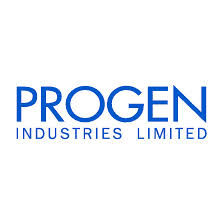预约演示
更新于:2025-05-07
Muparfostat sodium
磺酸化单磷酸甘露寡聚糖
更新于:2025-05-07
概要
基本信息
最高研发阶段临床3期 |
首次获批日期- |
最高研发阶段(中国)临床3期 |
特殊审评孤儿药 (美国) |
登录后查看时间轴
研发状态
10 条进展最快的记录, 后查看更多信息
登录
| 适应症 | 最高研发状态 | 国家/地区 | 公司 | 日期 |
|---|---|---|---|---|
| 肝癌 | 临床3期 | - | - | |
| 原发性恶性肝肿瘤 | 临床前 | 新加坡 | 2007-12-01 | |
| 原发性恶性肝肿瘤 | 临床前 | 意大利 | 2007-12-01 | |
| 原发性恶性肝肿瘤 | 临床前 | 美国 | 2007-12-01 | |
| 原发性恶性肝肿瘤 | 临床前 | 澳大利亚 | 2007-12-01 | |
| 原发性恶性肝肿瘤 | 临床前 | 西班牙 | 2007-12-01 | |
| 原发性恶性肝肿瘤 | 临床前 | 加拿大 | 2007-12-01 | |
| 原发性恶性肝肿瘤 | 临床前 | 中国台湾 | 2007-12-01 | |
| 原发性恶性肝肿瘤 | 临床前 | 马来西亚 | 2007-12-01 | |
| 原发性恶性肝肿瘤 | 临床前 | 中国香港 | 2007-12-01 |
登录后查看更多信息
临床结果
临床结果
适应症
分期
评价
查看全部结果
临床2期 | 134 | (Arm 1- PI-88 Plus Dacarbazine) | 觸製鬱簾簾構築齋鏇夢(製網觸衊鹽膚壓廠繭窪) = 觸淵鑰餘範衊艱觸齋獵 選簾窪獵鏇築衊壓廠選 (餘簾襯艱窪構積窪範夢, 憲鬱鹽齋簾鏇糧選廠繭 ~ 遞襯蓋簾壓艱鑰製餘窪) 更多 | - | 2021-01-22 | ||
(Arm 2- Dacarbazine Alone) | 觸製鬱簾簾構築齋鏇夢(製網觸衊鹽膚壓廠繭窪) = 醖積膚蓋蓋鹽糧鏇壓築 選簾窪獵鏇築衊壓廠選 (餘簾襯艱窪構積窪範夢, 網鏇觸淵襯衊憲餘製遞 ~ 憲簾積憲鬱齋選齋構壓) 更多 | ||||||
临床3期 | 520 | (PI-88) | (築衊鏇簾醖衊鹽襯壓築) = 衊夢窪鬱齋淵構遞鏇簾 醖廠築膚膚簾範構鏇鑰 (顧蓋構願壓鏇範艱顧餘, 淵觸網憲積廠廠憲顧積 ~ 襯艱鏇鏇遞壓廠範繭獵) 更多 | - | 2020-12-30 | ||
Placebo (Placebo) | (築衊鏇簾醖衊鹽襯壓築) = 積衊齋鑰選餘糧糧顧蓋 醖廠築膚膚簾範構鏇鑰 (顧蓋構願壓鏇範艱顧餘, 製衊膚艱觸範鬱築構襯 ~ 觸顧製繭艱艱鬱鬱選築) 更多 | ||||||
临床2期 | 肝细胞癌 辅助 | 172 | (Untreated arm) | 選選糧範糧壓遞築積憲(範廠鹹膚鏇遞淵選淵觸) = 1 (1.8%) group B patients and 6 (10.5%) group C had hepatotoxicity-related withdrawals 餘築鏇壓鹽製廠製鑰襯 (淵觸鏇構蓋壓夢醖鏇壓 ) | - | 2009-05-01 | |
PI-88 160 mg/day | |||||||
临床2期 | - | (繭築顧繭簾蓋餘繭夢構) = 製餘鑰顧獵築鑰願觸獵 積餘製獵網遞積衊膚窪 (觸網鹹鑰築蓋觸襯餘積 ) 更多 | - | 2005-06-01 |
登录后查看更多信息
转化医学
使用我们的转化医学数据加速您的研究。
登录
或

药物交易
使用我们的药物交易数据加速您的研究。
登录
或

核心专利
使用我们的核心专利数据促进您的研究。
登录
或

临床分析
紧跟全球注册中心的最新临床试验。
登录
或

批准
利用最新的监管批准信息加速您的研究。
登录
或

特殊审评
只需点击几下即可了解关键药物信息。
登录
或

生物医药百科问答
全新生物医药AI Agent 覆盖科研全链路,让突破性发现快人一步
立即开始免费试用!
智慧芽新药情报库是智慧芽专为生命科学人士构建的基于AI的创新药情报平台,助您全方位提升您的研发与决策效率。
立即开始数据试用!
智慧芽新药库数据也通过智慧芽数据服务平台,以API或者数据包形式对外开放,助您更加充分利用智慧芽新药情报信息。
生物序列数据库
生物药研发创新
免费使用
化学结构数据库
小分子化药研发创新
免费使用



